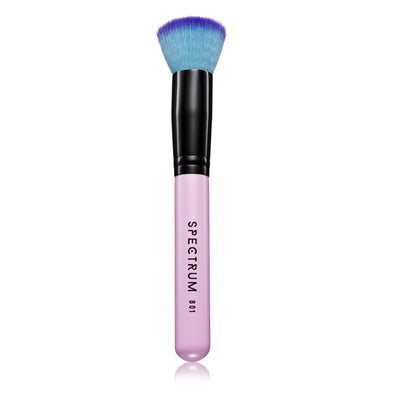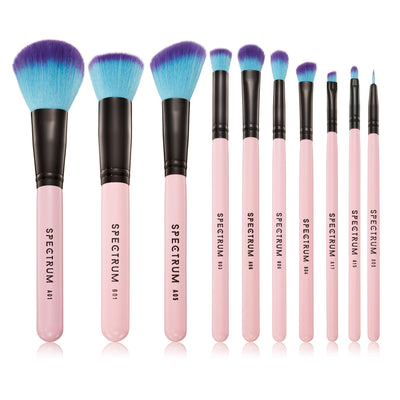Colour Theory In Makeup

In the world of makeup artistry, understanding colour theory unlocks your ability to create amazing looks, to know when to choose subtle shades and when to go big with colours that pop and contrast. The art of makeup relies heavily on colour, and mastering colour theory is essential for makeup artists and enthusiasts alike. Think of it as wielding a painter's palette, where the human face becomes the canvas for a myriad of creative possibilities. This article delves into the fascinating world of colour theory in makeup, exploring its principles, applications, and the transformative power it holds.
Understanding the Basics of Colour Theory
Colour theory revolves around the colour wheel, a circular diagram that organises colours in a way that helps us understand their relationships. The primary colours—red, blue, and yellow—are the building blocks of all other colours. Mixing these in varying proportions creates secondary and tertiary colours. Understanding this fundamental concept is crucial for effective colour selection which in turn leads to effective harmonisation in your choices as a makeup artist, and harmonisation of colour is a really important concept.
Harmonising with the Colour Wheel
One of the first lessons in makeup colour theory is understanding colour harmonisation. There are several ways to achieve harmony using the colour wheel:
Complementary Colours: These are pairs of colours that are opposite each other on the colour wheel, such as red and green or blue and orange. In makeup, using complementary colours strategically can create striking contrasts that enhance certain features. Think two tone lips or a mascara that really pops against the rest of the face.
Analogous Colours: Analogous colours are adjacent to each other on the colour wheel, like yellow, yellow-green, and green. Using analogous colours in makeup can create a harmonious and balanced look. Think looks that are perfect for work where big and bold contrasts might not always be appropriate but subtle highlighting and delicate brush work can pick out key features of the face in a way that subtly elevates them.
Triadic Colors: This scheme involves selecting three evenly spaced colours on the colour wheel, like red, blue, and yellow. Using triadic colours in makeup can result in vibrant and dynamic looks. Be careful though as three colours can be a lot and balancing this can get a bit tricky.
Monochromatic Colours: Monochromatic makeup involves using different shades and tints of a single colour. This approach often creates a sophisticated and elegant appearance. Think the latte look which uses nude and bronze shades.
Creating a Flawless Base
The foundation of any makeup look is the skin. Understanding colour theory is vital for selecting the right foundation shade to match your skin's undertone. Undertones can be warm, cool, or neutral, and they play a crucial role in determining which foundation shade will blend seamlessly with your complexion. Using the wrong undertone, and the wrong foundation brush to apply your foundation with, can result in a mismatched or ashy appearance.
Warm Undertones: People with warm undertones have yellow, peach, or golden hues in their skin. They should opt for foundation shades with warm undertones, such as shades labelled as "warm" or "golden."
Cool Undertones: Those with cool undertones have pink, red, or blue undertones in their skin. They should choose foundation shades with cool undertones, often labelled as "cool" or "rosy."
Neutral Undertones: Neutral undertones have a balance of warm and cool tones in the skin. People with neutral undertones can typically wear a broader range of foundation shades.
Enhancing Eye Makeup
Eyes are often considered the focal point of the face and therefore are a key area for makeup, and understanding colour theory is crucial for creating captivating eye looks:
Eyeshadow: The eyeshadow colours you choose should complement your eye colour and skin tone. For example, warm-toned eyeshadows like oranges and golds can make blue eyes pop, while cool-toned purples and blues can enhance brown eyes.
Eyeliner: Eyeliner colour choices can also follow colour theory principles. For a classic look, black or brown eyeliner works well, but for a pop of colour, selecting a complementary shade to your eye colour can be a game-changer.
Mascara: Black mascara is a universal favourite, but coloured mascaras in shades like navy or plum can add a subtle yet intriguing twist to your eye makeup.
Of course, it’s great to select the right colour palette here, but make sure you’re applying the right makeup with the right technique and the right eye makeup brushes.
Lips that Speak Volumes
The colour of your lips can dramatically impact your overall makeup look. Consider the following when choosing lip colours:
Skin Tone: Your lip colour should complement your skin tone. Bold reds, deep plums, and warm corals can be stunning choices, but again the key is finding shades that harmonise with your complexion.
Eye Makeup: Coordinating your lip colour with your eye makeup can create a cohesive and polished appearance. Complementary or analogous colours can be a winning combination.
Occasion: The formality of the event or occasion should also influence your lip colour choice. Nude and subtle shades are ideal for daytime or professional settings, while bold and vibrant colours can shine at evening events.
Master the Theory
In the realm of makeup, colour theory is the compass that guides artists towards creating breathtaking looks. Understanding how colours interact and harmonise on the colour wheel allows you to enhance your natural beauty and unleash creativity. Whether you're an aspiring makeup artist or simply someone who loves experimenting with cosmetics, mastering colour theory is the key to achieving stunning results. So, embrace the artistry of makeup and let colour theory be your guide to a world of endless possibilities.











